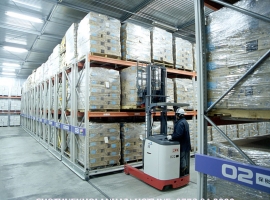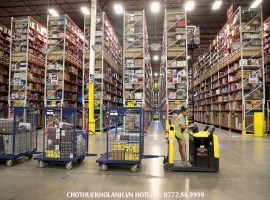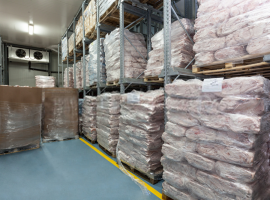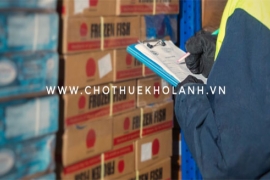FOOD PRESERVATION METHODS FOR BUSINESSES
You may not know: Food preservation is one of the oldest technologies that humans have developed until now.
By extending the shelf life of food with preservation methods, our ancient ancestors did not rely entirely on what were available from hunting and gathering. They learn to preserve food and seeds, then spending more time on other activities such as growing crops, improving tools, and migrating to new more fertile lands.
Food preservation methods have been applied for a long time
The preserved food helped people survive long journeys, on ships that have been floating for months at sea without fresh food. That's how Cristoforo Colombo discovered the America (wikipedia.org) and humans left their footprints around the globe. This is also a premise for humans to be able to explore further, not only on Earth but also in outer space.
Humans expect to occupy the space and go beyond the galaxy we live in in the future. And that will only be possible if food preservation techniques are further developed.
However, extending shelf life and preventing spoilage are not the only benefit of food preservation because foods are preserved does not mean they won’t be spoiled. So, how can we properly understand this method? Let's find out more details in the following article with Nam Ha Noi Cold Storage - a reputable and reliable partner of the business!
Why do businesses need to preserve food?
For many manufacturing/processing/retailing businesses today, food preservation is the most long-term profitable and cost-saving method. Typically, for large retailers such as Coopmart, BigC, knowing how to preserve food helps them earn more profits.
COOPMART branded products
That's how retailers take full advantages of preservation methods to turn perishable products into higher-value items that can be sold at a profit. Or the same goes for production/farming businesses. There will be a time of year when they get more agricultural/seafood/meat output than usual. Now, if the business applies a reasonable preservation method, they can distribute those goods and profit year-round when using food preservation instead of only selling them in a single season. This method can be applied to different foods at different times of the year. Best of all, preservation helps to reduce weight and still retain all the nutrition of the food after it is packaged.
So, what are preservation methods that businesses can apply to their goods? Let's go to the next part to get the most accurate answer!
6 most popular food preservation techniques today!
Food preservation prevents the growth of microorganisms (such as mold, yeast, bacteria) or other microorganisms and slows down the oxidation of rancid fats... Below are 6 methods of food preservation are being used by most businesses:
Modern food preservation techniques
These are methods carried out by using modern machines and equipment based on science and improvement achievements of people researches. Typically as:
Freezing method
Use the freezing method for most foods
Freezing is one of the most commonly used preservation solutions in both industry and household today. Industrial cold storage facilities provide large storage capacity and long duration for national emergency prepared food storage strategies in many countries.
Freezing lowers the food temperature below 0°C or colder. In this condition, the physico-chemical-biochemical reactions of the food are slowed down. However, this method cannot destroy and disinfect food. It only stops at slowing down the development of negative agents that affect the quality of frozen food.
To learn more about this method, you can read more at the following article: FOOD FROZING EQUIPMENT – A GOOD SOLUTION FOR PRESERVING GOODS PROPERLY
Vacuum
Vacuum method
Vacuum is a method of removing air from the product packaging before sealing using modern machinery.
Vacuum packaging reduces oxygen in plastic bags, limits the growth of aerobic bacteria, molds,... and prevents the evaporation of food nutrients. This method is also used for long-term dry storage of foods such as cereals, nuts, frozen meats, cheeses, smoked fish, coffee, and chips. On a shorter-term basis, vacuum packaging can be used to preserve fresh foods such as vegetables, meat, and liquids as it inhibits bacterial growth.
Traditional preservation techniques
Canned, bottles, jars
Canned/bottled/jars of cooked food
Canning is a method of preserving food by placing food in bottles or similar containers and then heating it to a temperature that destroys microorganisms that cause food spoilage. During the heating process, the air will be pushed out of the container and as it cools, the air will be sucked in and sealed.
Food preserved by canning and bottling is often at risk of spoilage as soon as the seal is opened. Attention should be paid to quality control and hygiene in the canning process because once these factors are not ensured result in cases such as food poisoning, rapid spoilage, microorganisms entering the food, etc.
Sour salt
Sour salt is mainly used for vegetables
Before the advent of many modern preservation methods like today, sour salt was one of the manual methods commonly used in Asian countries including Vietnam. By cooking/boiling/soaking food in salt, vinegar, wine or olive oil, etc. to inhibit the growth and existence of unwanted microorganisms.
In particular, salt is the material with the best preservation effect. Salt reduces the water activity of food, creating an unfavorable environment for pathogens and promoting fermentation (beneficial bacteria) in foods.
The pickling method causes food to change into a different state/color/taste compared to normal (fresh) so individuals/businesses need to be careful when applying it in production.
Smoke
Smoked method for meats
Smoked is a method of preserving meat, fish and some other types of food by exposing the food to smoke (hot or cold) for a long time so that it absorbs and spreads the natural smell of wood, sawdust,... This helps to remove moisture from the food, prevents the growth of bacteria/fungi and enhances the aroma and flavor of the meat. The combination of heat that dries the meat surface and the hydrocarbons from the smoke helps preserve the food.
If you want to change the taste of food, this is the way for businesses/individuals to store meat and fish. However, too many hydrocarbons in meat can cause cancer for users, so food manufacturers should advise consumers when using this product.
Drying
Food drying is a method of food preservation in which food is dried (dehydrated or dried). Drying inhibits the growth of bacteria, yeast and mold through the removal of water. Most types of meat can be dried, especially pork because it is difficult to store without preservation. Many fruits can also be made into dried fruits (apples, pears, bananas, mangoes, papayas, coconuts, etc.). Drying is also a common method of preserving cereal grains such as wheat, maize, oats, barley, rice, millet and rye.
Drying method is applied to many products, most of which are nuts
When being dried, the vitamin content in the food is damaged. Vitamins A, E, B-complex are lost if food is dried for too long. Therefore, the drying method is not the right choice if businesses pay attention to keeping the intact quality of food.
Of all the above methods, only two methods are to keep the shape, taste and color of food, which are freezing and vacuuming. In particular, the freezing method is the best method that enterprises can apply in production.
Immediately consult about cold storage rental service at Nam Ha Noi!
Why is frozen food the best method for businesses?
Many current preservation methods apply dehydration in food to make it possible to store for a longer time. While these methods are very effective in practice, they are not good at yielding a product with the full quality of freshness as food.
For example, in sour salt method, food is often turned dark and the taste is not as good as the original after carried out this method. Or like drying, the meat/fruit/vegetables are dry and harder than before, in addition, there are also changes in the color and taste of the food.
So which method should be used if the business wants to keep the most flavor, color and nutrients of food? The answer is preserving food by freezing!
The color and quality of food are kept in refrigerated preservation method
In terms of quality, the freezing method is the best way to preserve food up to the present time. Considering many factors such as:
- Food keeps its best condition (when defrosted properly);
- Color retention (if properly deactivated);
- Keep the taste when cooking/eating (if frozen correctly);
- Frozen preservation deserves to be the method to retain the most properties of food.
In terms of economic, refrigerated preservation helps businesses:
- Store food for long-term use, prevent shortage of goods in the market as well as make a profit from the price difference (with out-of-season products) to help businesses better save the operating costs.
- Use less time for mass freezing (mechanical freezing of food is quicker than other methods), reducing waiting time and costs for businesses.
- Food safety: Businesses do not need to worry about food safety because preserving food by freezing method is completely free of preservatives.
There are also many more benefits that businesses can get when using the freezing method to preserve food. For more information regarding frozen foods, you can visit HERE.
Note: To freeze food, you need freezers and mini cold storages to preserve products. Or businesses can use the cold storage rental service of Nam Ha Noi cold storage if you are in the North!
Hopefully, businesses can soon apply and succeed with the above methods. Nam Ha Noi cold storage will always companion with businesses/restaurants/store chains in storing and preserving frozen foods. If you are looking for a cold storage rental service in Hanoi or surrounding areas, please quickly call 0772.84.999 for advice in the fastest time.









.jpg)






